You could try something along these lines. Make each line into a button which, when clicked, identifies itself.
plot=Plot[{Sin[x],Cos[x]},{x,0,2*Pi}];
sinline=plot[[1,1,3,2]];
cosline=plot[[1,1,4,2]];
message="";
altplot=Append[plot,PlotLabel->Dynamic[message]];
altplot[[1,1,3,2]]=Button[sinline,message="Clicked on the Sin line"];
altplot[[1,1,4,2]]=Button[cosline,message="Clicked on the Cos line"];
altplot
If you add an EventHandler you can get the location where you clicked and add an Inset with the relevant positioned label to the plot. Wrap the plot in a Dynamic so it updates itself after each button click. It works fine.
In response to comments, here is a fuller version:
plot = Plot[{Sin[x], Cos[x]}, {x, 0, 2*Pi}];
sinline = plot[[1, 1, 3, 2]];
cosline = plot[[1, 1, 4, 2]];
AddLabel[label_] := (AppendTo[plot[[1]],
Inset[Framed[label, Background -> White], pt]];
(* Remove buttons for final plot *)
plainplot = plot;
plainplot[[1, 1, 3, 2]] = plainplot[[1, 1, 3, 2, 1]];
plainplot[[1, 1, 4, 2]] = plainplot[[1, 1, 4, 2, 1]]);
plot[[1, 1, 3, 2]] = Button[sinline, AddLabel["Sin"]];
plot[[1, 1, 4, 2]] = Button[cosline, AddLabel["Cos"]];
Dynamic[EventHandler[plot,
"MouseDown" :> (pt = MousePosition["Graphics"])]]
To add a label click on the line. The final annotated chart, set to 'plainplot', is printable and copyable, and contains no dynamic elements.
[Later in the day] Another version, this time generic, and based on the initial chart. (With parts of Mark McClure's solution used.) For different plots 'ff' and 'spec' can be edited as desired.
ff = {Sin, Cos, Tan, Cot};
spec = Range[0.1, 10, 0.1];
(* Plot functions separately to obtain line counts *)
plots = Array[ListLinePlot[ff[[#]] /@ spec] &, Length@ff];
plots = DeleteCases[plots, Line[_?(Length[#] < 3 &)], Infinity];
numlines = Array[Length@Cases[plots[[#]], Line[_], Infinity] &,
Length@ff];
(* Plot functions together for annotation plot *)
plot = ListLinePlot[#@spec & /@ ff];
plot = DeleteCases[plot, Line[_?(Length[#] < 3 &)], Infinity];
lbl = Flatten@Array[ConstantArray[ToString@ff[[#]],
numlines[[#]]] &, Length@ff];
(* Line positions to substitute with buttons *)
linepos = Position[plot, Line, Infinity];
Clear[line];
(* Copy all the lines to line[n] *)
Array[(line[#] = plot[[Sequence @@ Most@linepos[[#]]]]) &,
Total@numlines];
(* Button function *)
AddLabel[label_] := (AppendTo[plot[[1]],
Inset[Framed[label, Background -> White], pt]];
(* Remove buttons for final plain plot *)
plainplot = plot;
bpos = Position[plainplot, Button, Infinity];
Array[(plainplot[[Sequence @@ Most@bpos[[#]]]] =
plainplot[[Sequence @@ Append[Most@bpos[[#]], 1]]]) &,
Length@bpos]);
(* Substitute all the lines with line buttons *)
Array[(plot[[Sequence @@ Most@linepos[[#]]]] = Button[line[#],
AddLabel[lbl[[#]]]]) &, Total@numlines];
Dynamic[EventHandler[plot,
"MouseDown" :> (pt = MousePosition["Graphics"])]]
Here's how it looks. After annotation the plain graphics object can be found set to the 'plainplot' variable.



